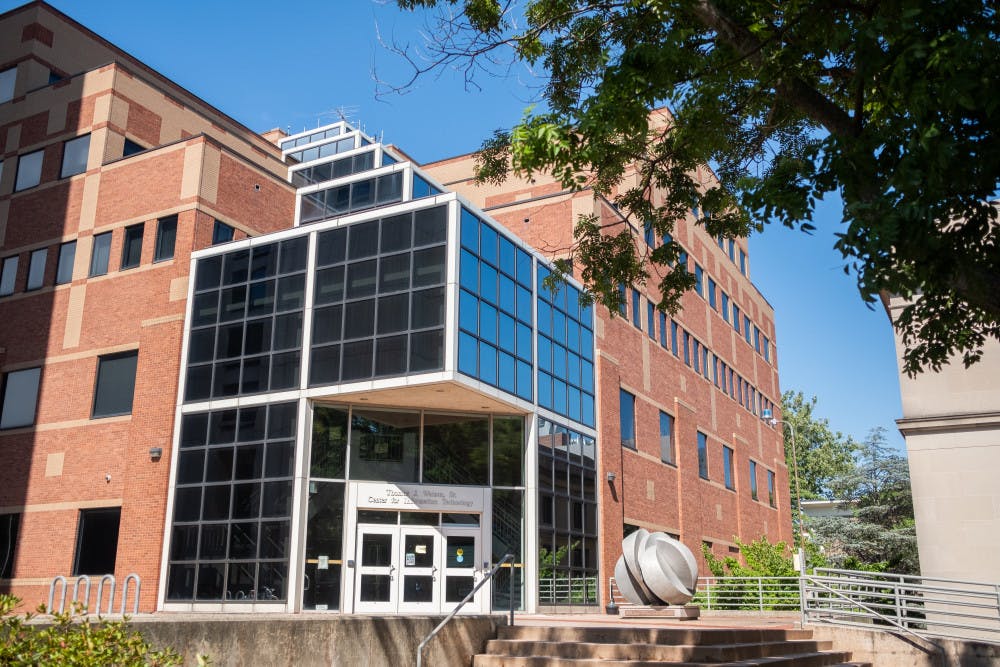In early spring, before COVID-19 had officially been deemed a pandemic and the semester moved online, the University’s Department of Computer Science was one of the first to begin moving its operations online. Months later, with the United States still experiencing record-high daily increases in cases, the department is planning for remote classes once again.
Although the University announced that some classes will be able to meet in person during the upcoming fall semester, the majority of classes in the computer science department will not be among them. Due to their large, lecture-based format, most CS classes will not meet the 20-person limit the University has set for in-person instruction.
Still, within the boundaries of an online format, professors in the department have decisions to make. For example, many are currently deciding between conducting synchronous or asynchronous lectures, according to Don Stanford, adjunct professor of the practice of computer science. To accommodate students' needs, professors would offer a recorded component in both scenarios, but the synchronous lectures would also provide real-time instruction.
Stanford will be teaching CSCI 0020: “The Digital World” this coming fall. The “sheer number of students” that he suspects will enroll in the class creates the greatest class design challenge.
Stanford is not alone.
Some professors have turned to creative solutions for the unique circumstances posed by remote learning. Associate Professor of Computer Science Jeff Huang will be teaching the class CSCI 1300: “User Interfaces and User Experience” on user interface design. Just under 270 students enrolled in the class last fall. Huang has been planning for the fall alongside TAs and students receiving SPRINT funding, a University remote summer funding award for undergraduates and recent graduates.
Huang is considering coupling live or recorded lectures with “talk-show” style classes, where he could lecture and the TAs could curate questions from students.
“It would be great to hear from students which one they’d prefer,” Huang said of the choice between synchronous or asynchronous learning.
Huang will also incorporate a tool into his course that will allow students to check one another’s progress in interface design projects with the click of a button. “If you think of it as a studio, you kind of look around the room and get a sense of where other students are at and what other students are doing,” Huang explained. He hopes this will add an element of collaboration to the course that might otherwise be lost in the continuation of remote learning. For the same reasons, Huang is also considering implementing a peer-grading system that would allow students to give feedback on one another's work.
Another challenge inherent to planning remote computer science classes is the format of TA hours, which allow students to seek help from course Teaching Assistants while working on their coding projects. Thomas Doeppner, associate professor of computer science, will be teaching CSCI 0330: “Introduction to Computer Systems” this fall. Doeppner said that online TA hours will be necessary and were something his classes “experimented within the spring” following the transition to remote learning.
“We will be essentially changing how we handle student questions,” Doeppner said. For help regarding code, students will be able to use the class question forum Piazza. For conceptual questions, Doeppner hopes to hold small-group sessions either in person or via Zoom, refining practices that were first implemented during the remote portion of the spring semester.
For computer science concentrators, while remote learning within the department may be more complicated than in-person classes, the discipline is more conducive than others to a remote format.
Mithun Ramesh ’23 plans to take four classes this fall, including two within the computer science department. All four classes will be taught online, he said.
Regarding the department’s transition to online instruction, Ramesh said it ultimately will not affect his plans. “For something like a smaller, discussion-based class ... I think (online instruction) would impact it greatly because I think there’s a lot of value in … in-person discussion,” Ramesh said. “But for a subject like CS, in which it’s mostly lectures and you’re doing work on your computer anyway, I don’t think the style of learning will be affected that much.”
After classes went remote in March, Ramesh noticed that group work was difficult for computer science classes in particular. “It took a lot of time to figure out how to do homework efficiently in problem-solving groups with TAs because sometimes the online format takes so long to ask people questions,” he said.
Still, Leyton Ho ’23 feels that online instruction is the best approach for the computer science department. Not only does it seem “more prudent to take classes online for the safety of the professors,” but Ho thinks “CS is the department that is most conducive to online learning.”
“I felt that of all the classes I was in last semester, CS was certainly the one where I suffered the least from online learning because it’s a class that’s dependent on being online regardless,” Ho said. While, overall, Ho says the transition to remote education hindered the academic experience, for CS specifically it “wasn’t a huge detractor.”

Jack Walker served as senior editor of multimedia, social media and post- magazine for The Herald’s 132nd Editorial Board. Jack is an archaeology and literary arts concentrator from Thurmont, Maryland who previously covered the Grad School and staff and student labor beats.





